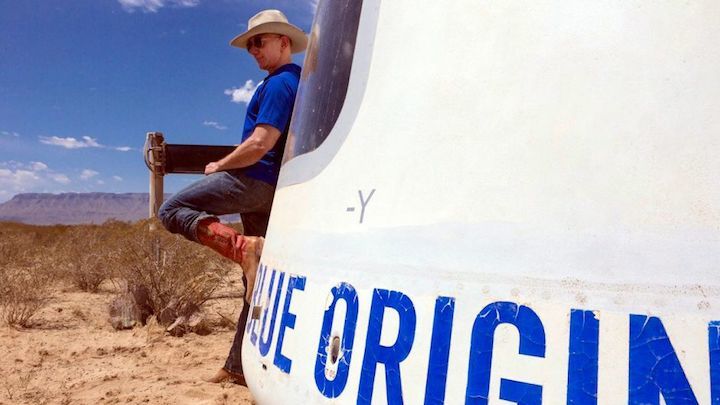2.05.2018

Amazon founder Jeff Bezos has shed new light on what’s driving him to invest billions in his space technology company, Blue Origin.
Both he and rival rocket-maker Elon Musk have long been clear that their investments in space are mission-driven. Bezos has talked about his lifelong enthusiasm for a future where millions of people live and work in space. Many have noticed the inspiration of space colony theorist Gerard O’Neill, who was finishing his career at Princeton when a young Bezos led the university’s chapter of Students for Exploration and Development of Space.
But it seems Bezos was also influenced by Vaclav Smil, an intellectual omnivore and prodigious author whose recent works have focused on energy, food production, and the environment. Microsoft founder Bill Gates is a proud fan of Smil’s dense tomes, and perhaps has been sharing books with his fellow Seattle tech entrepreneur. In a new interview with the CEO of German media conglomerate Axel Springer, Bezos explained why it is so vital for humanity to take to space, in terms that seemed positively, well, Smilian:
Let me give you just a couple of numbers. If you take your body—your metabolic rate as a human it’s just an animal, you eat food, that’s your metabolism—you burn about a 100 Watts. Your power, your body is the same as a 100-Watt lightbulb. We’re incredibly efficient. Your brain is about 60 Watts of that. Amazing. But if you extrapolate in developed countries where we use a lot of energy, on average in developed countries our civilizational metabolic rate is 11,000 Watts. So, in a natural state, where we’re animals, we’re only using a 100 Watts. In our actual developed-world state, we’re using 11,000 Watts. And it’s growing. For a century or more, it’s been compounding at a few percent a year—our energy usage as a civilization.
Now if you take baseline energy usage globally across the whole world and compound it at just a few percent a year for just a few hundred years, you have to cover the entire surface of the Earth in solar cells. That’s the real energy crisis. And it’s happening soon. And by soon, I mean within just a few hundred years. We don’t actually have that much time. So what can you do? Well, you can have a life of stasis, where you cap how much energy we get to use. You have to work only on efficiency. By the way, we’ve always been working on energy efficiency, and still we grow our energy usage. It’s not like we have been squandering energy. We have been getting better at using it with every passing decade. So, stasis would be very bad, I think.
Now take the scenario, where you move out into the Solar System. The Solar System can easily support a trillion humans. And if we had a trillion humans, we would have a thousand Einsteins and a thousand Mozarts and unlimited (for all practical purposes) resources and solar power unlimited for all practical purposes. That’s the world that I want my great-grandchildren’s great-grandchildren to live in.
Essentially, humans will need more power, and there’s more of it in space.
This is long-term thinking, but it does help explains Blue Origin’s trajectory. The company is currently flight-testing a small, reusable rocket, New Shepard, that can fly tourists to the edge of space. It’s also building a larger one, New Glenn, to fly satellites into orbit and humans into space. These aren’t the vehicles that will colonize space, but the team behind them hopes they will lay the foundation for a new generation of economic activity in space.
Meanwhile, over at SpaceX, Elon Musk’s vision is set more specifically on sending humans to Mars in his lifetime. While the reusable rockets his company currently operates, the Falcon 9 and Falcon Heavy, are driving down the cost of getting satellites (and next year, humans) into space, they aren’t heading for Mars, either. That’s the job of a larger rocket that SpaceX is building now and expects to fly in the early 2020s.
The new space race is well underway.
Quelle: Quartz
